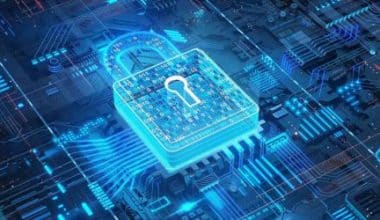At the launch of your business, you sacrificed time, money, late nights, and other resources to make sure your business turned into a success. Despite these costs and careful planning, I have noticed that most people forget one aspect of their business: cybersecurity. I thought data breaches only happened to big companies, but in 2023 alone, Verizon revealed that 43% of cyberattacks target small firms. Effective cybersecurity frameworks like the NIST CSF identify threats before they occur, protect your data, detect suspicious activities, respond to incidents, govern, and recover quickly. I’ll assist you in choosing a cybersecurity framework for your firm.
Key Takeaway
Cybersecurity is extremely important for businesses irrespective of size, and one way to prevent and minimize cyber attacks, protect data, and prevent data loss, is to implement a robust cybersecurity framework that is tailored to your business specific needs and size.
It is also neccesary to regularly review and update these frameworks in order for them to remain effective
What are Cybersecurity Frameworks?
According to IBM, global data breaches cost USD 4.45 million, up 15% from 2020. These figures show that small and medium businesses need strong cybersecurity. These frameworks provide direction and best practices for cyber threat management. Businesses, irrespective of size, can navigate cyber threats using cybersecurity frameworks.
Why Your Business Needs a Cybersecurity Framework
No company is free from cyber threats as long as you use digital tools to conduct your business operations. Companies of all sizes need robust cybersecurity to combat today’s complex cyber threats. This is why:
By depending on cybersecurity frameworks to deal with different risks effectively in today’s constantly evolving cyber threat environment, these frameworks give me organized ways to find threats, evaluate them, and take steps to reduce their impact. They also help me set up strong security measures to keep the private information of my clients safe, follow the rules, and lower legal risks.
In addition, I can better respond to incidents, operate the business, and develop stakeholder trust by controlling these frameworks’ risks ahead of time.
Types of Cybersecurity Frameworks
There are several types of cybersecurity frameworks that businesses of various sizes and needs can implement to protect their digital assets. Some of them are:
- Risk-Based Frameworks: These frameworks categorize actions by organizational risk for effective risk management, for example, NIST CSF and ISO/IEC 27001.
- Compliance-Based Frameworks: Small businesses and organizations can implement these to meet regulatory and legal standards (e.g., PCI DSS, HIPAA Security Rule).
- Governance Frameworks: These set rules for good cybersecurity governance that make sure security goals are aligned with business goals (for example, COBIT and the NACD Cybersecurity Framework for Boards of Directors).
- Specific frameworks for each industry: These are made to fit the needs of a particular industry and the rules that govern it (for example, the FSSCC Financial Services Sector Cybersecurity Profile and the Auto-ISAC Automotive Cybersecurity Best Practices).
- Technology-Specific Frameworks: These focus on protecting certain technologies or settings from common threats (for example, the CSA Security Guidance and the NIST ICS Cybersecurity Framework).
- Maturity Models: These frameworks grade an organization’s cybersecurity maturity and propose long-term improvement roadmaps.
- Cloud security frameworks like the CSA Security Guidance for Critical Areas of Focus in Cloud Computing (CCM aligned with the NIST CSF help enterprises that rely on cloud technologies.
So, What are Some Factors to Consider when Choosing Cybersecurity Frameworks for Your Business?
When I was choosing the right cybersecurity framework for my startup, I needed to ensure it aligned with my budget, compliance needs, and scalability requirements. Industry-specific guidance was also crucial, along with evaluating the internal expertise and external support I could get from these frameworks. The framework I chose had to integrate seamlessly with our IT infrastructure and provide robust risk management capabilities. Ultimately, it needed to align with our business objectives and priorities to effectively protect against evolving cyber threats.
Overview of 8 Best Cybersecurity Frameworks
#1. NIST Cybersecurity Framework (CSF)
The NIST-made cybersecurity framework gives your business an adaptable and risk-based way to protect your client data, and it is a popular one among many businesses. I realized that many businesses like it because it is flexible and lets them match controls to their risk profile. However, although it is flexible, implementing specific NIST controls may require technical expertise.
Notably, the CSF highlights teamwork, encouraging stakeholders to participate for stronger resilience. Also, it works with many cybersecurity standards, which makes it simple to add to current projects like ISO/IEC 27001 and CIS Controls.
#2. CIS Controls
The Center for Internet Security (CIS) Controls offers a prioritized set of actions addressing a wide range of cyber threats, including administrative and physical safeguards, unlike some other frameworks. It offers 20 essential controls, targets common cyber threats, and significantly enhances security readiness.
However, it may not suffice for highly regulated industries or advanced threats. CIS Controls benefits from a community-driven approach, regularly updated with real-world threat intelligence. They are also practical and accessible for businesses of all sizes and maturity levels since they provide customized implementation support.
#3. ISO/IEC 27001
This widely recognized standard helps organizations build, deploy, maintain, and enhance their information security management systems! Additionally, it systematically manages information security threats, including access control, risk management, and incident response. However, compliance may not be feasible for all businesses due to resource requirements. ISO/IEC 27001 is also scalable and adaptable to SMBs because it allows for customizable implementation. It also encourages ISMS updates to handle changing risks and business needs.
#4. COBIT
ISACA’s COBIT governs enterprise IT governance and management, combining business goals with risk management. This paradigm aligns IT security with business goals to support key goals. Small businesses without IT governance frameworks may find COBIT unsuitable since it requires a deep grasp of IT processes and governance structures.
Some of COBIT’s distinctive IT governance focus include strategic alignment, value delivery, risk management, resource management, and performance assessment. This holistic strategy guarantees that organizations can integrate cybersecurity into their company strategies. COBIT also emphasizes metrics by offering a framework for developing and monitoring KPIs to evaluate cybersecurity controls and processes and track progress and compliance.
#5. CSA Security Guidance for Critical Areas of Focus in Cloud Computing:
Cloud Security Alliance (CSA) Security Guidance covers essential cloud security topics for organizations deploying cloud services. This information is critical for firms that rely on cloud solutions, covering architecture, identity management, and incident response. It can also supplement NIST and CIS controls to meet cybersecurity needs. In essence, it clarifies cloud service providers (CSPs) and customers’ joint accountability, helping them determine security roles and responsibilities. Serverless computing and containerization are also addressed, along with risk mitigation measures.
#6. PCI DSS
The Payment Card Industry Data Security Standard (PCI DSS) mandates requirements to secure payment card transactions and prevent fraud and breaches, which are relevant for many companies handling payment card data. Compliance is mandatory for those storing, transmitting, or accepting credit card data, with specific controls outlined. Non-compliance can lead to fines and reputational harm, even for businesses using established payment processors. PCI DSS emphasizes network segmentation to reduce compliance scope and risk, alongside regular vulnerability scanning and testing for proactive security.
#7. HIPAA Security Rule
The HIPAA Security Rule provides national standards for protecting electronic protected health information (ePHI), which is vital for healthcare and other entities handling it. It further mandates specific measures like access control and data encryption. While it is mandatory for healthcare providers and related entities, understanding HIPAA obligations is essential for all involved.
Additionally, HIPAA prioritizes workforce training on security protocols and incident response. Furthermore, it underscores the importance of risk analysis and management to effectively protect sensitive health data, providing a framework for risk assessments and safeguarding their implementation.
#8. GDPR Compliance Framework
The GDPR Compliance Framework helps firms comply with the GDPR, which protects EU citizens’ data. While EU-based enterprises are targeted, GDPR compliance applies to any entity processing EU residents’ data. This regulation also controls data collection, storage, and processing, giving individuals more privacy control.
This compliance requires upfront data protection measures in products and services and data processing transparency and responsibility. Moreover, GDPR compliance requires processing activity records and security measures to ensure lawfulness and transparency.
Comparison of Cybersecurity Frameworks
The NIST Cybersecurity Framework is my favorite cybersecurity framework. It covers everything from assessing risks to responding to incidents. You shouldn’t ignore other models, like CIS Controls or ISO/IEC 27001, though; each has its benefits and can help your overall cybersecurity plan.
| Framework | Scope and Applicability | Complexity | Implementation | Compliance Coverage | Support and Resources |
| NIST Cybersecurity Framework (CSF) | Widely applicable across industries; adaptable | Moderate complexity | Moderate | Guides best practices; aligns with various regulations | Extensive support and resources from NIST |
| CIS Controls | Applicable to all sizes and sectors | Moderate complexity | Moderate | Offers practical guidance; does not address compliance explicitly | The CIS offers a variety of resources |
| ISO/IEC 27001 | Internationally recognized; applicable to all sectors | High complexity | High | Demonstrates adherence to international standards | Mandatory compliance for organizations processing the personal data of EU residents |
| COBIT | Suitable for complex IT systems | Moderate to high complexity | Moderate | Guides governance and risk management | ISACA offers training, certification, and resources |
| CSA Security Guidance | Specific to cloud computing | Moderate complexity | Moderate | Addresses compliance for cloud computing | The CSA offers guidance documents and certification programs |
| PCI DSS | For organizations handling payment card data | Moderate complexity | Moderate | Mandatory compliance for organizations handling payment card data | PCI Security Standards Council provides resources, guides, and training |
| HIPAA Security Rule | For healthcare organizations | Moderate complexity | Moderate | Mandatory compliance for covered entities and business associates | HHS provides HIPAA compliance guidance and enforcement resources |
| GDPR Compliance Framework | Protects personal data of EU citizens | Moderate complexity | Moderate | Mandatory compliance for organizations processing the personal data of EU residents | EU Data Protection Authorities offer support for compliance efforts |
How to Tailor and Implement Cybersecurity Frameworks
As a small business owner, when you’re crafting your cybersecurity frameworks, you should do so with precision and care. These frameworks are flexible enough to meet your business needs, and match your demands, whether you run a small shop or a growing startup. Don’t forget that implementing a cybersecurity strategy takes time, resources, and devotion.
Securing your business is worth the effort for your peace of mind. So, consider these actions and principles to customize your cybersecurity frameworks:
#1. Understand your Business Constraints
Make sure you’re aware that small businesses have limited budgets, resources, and experience, and ensure that whatever framework you choose is flexible enough to deal with cybersecurity risks within these limits.
#2. Prioritize Security Controls
You should also find the most important security controls for your small business and put them in order of importance. Pay special attention to controls that have a big effect on the security of your digital assets.
#3. Simplify and Streamline Documents
Next, make your processes and documents more practical by cutting out unnecessary details and making sure everything is clear.
#4. Change the Size of the Controls
Change the controls to fit the size, complexity, and maturity level of your company. If necessary, lower the requirements to make the execution more realistic.
#5. Outsource where Necessary
You don’t have to do everything yourself. When necessary, use outside help for cybersecurity chores; for example, you could outsource monitoring, responding to incidents, and managing compliance. In addition, talk to cybersecurity experts or consultants to get advice and help. Use their knowledge and experience to improve your cybersecurity.
#6. Use Affordable Solutions
Pick cybersecurity solutions that are both affordable and scalable so that your small business gets the most out of its money without sacrificing security.
#7. Invest in Training
Spend money on training your employees to teach them about cybersecurity risks and create a culture of security knowledge and vigilance.
#8. Create Incident Response Plans
Create incident response plans that are relevant to the threats and risks your small business may face. These plans must include roles, responsibilities, and ways to handle things that go beyond what is expected of them.
#9. Regular Review and Update
To keep up with new threats, tools, and business needs, you should always review and update your cybersecurity practices. Don’t be stagnant and comfortable after implementing certain frameworks. Make sure you are evolving with the changing cybersecurity environment.
Tips for Building a Robust Cybersecurity Strategy
Cybersecurity guidelines provide a solid foundation, but they’re not enough. There are other basic and common practices that you can carry out as a business to protect yourself and your clients from cyber threats. Based on my cybersecurity experience and skills. I have underlined the need to add the following to your security strategy, as these experience-based steps improve cybersecurity and preparedness for evolving threats.:
- Security Awareness Training: Inform employees about cyber hazards and recommended procedures to avoid errors.
- MFA: For security, implement strong password policies and multi-factor authentication, to secure systems and accounts.
- Regular Software Updates: Ensure that you update your security software regularly to patch vulnerabilities quickly to reduce exploitation.
- Data Backup: Create a reliable backup and recovery plan to protect data from attacks.
- Incident Response Planning: Prepare for cybersecurity incidents with robust reaction and recovery procedures. This will help your business minimize cyber attack damage and downtime.
- Periodic Penetration Testing: You can execute periodic penetration testing to find and fix vulnerabilities before they’re abused
Which Framework is Best for Cyber Security?
There is no best answer. It all depends on your company’s size, industry, compliance, and risk. The commonly recommended frameworks include NIST CSF, ISO/IEC 27001, and CIS Controls.
What is the Importance of Cybersecurity Frameworks?
Cybersecurity frameworks give companies of diverse sizes the structured guidelines, standards, and best practices, essential for protecting sensitive data, preventing cyber threats, ensuring regulatory compliance, and maintaining overall digital resilience in an increasingly interconnected and threat-prone environment.
What is the Most used Cybersecurity Framework?
The NIST Cybersecurity Framework (CSF) is widely regarded as the most used cybersecurity framework globally, offering adaptable, risk-based guidelines that assist organizations manage and improve their cybersecurity readiness. It also offers a comprehensive approach to identifying, protecting, detecting, responding, governing, and recovering from cyber threats.
Is NIST 800-53 better than NIST CSF?
NIST 800-53 focuses on controls for federal systems, while NIST CSF offers a flexible, risk-based approach for all organizations. Your choice should depend on the specific needs and size of your company.
What is the Difference Between ISO 27001 and NIST Cybersecurity Framework?
While the NIST CSF focuses on risk management and cybersecurity best practices, ISO 27001 is an international standard that offers a comprehensive foundation for information security management systems.
Get Started Now
Don’t wait until you face cyber threats and attacks before you implement cybersecurity frameworks. Implementing cybersecurity frameworks for any business requires careful planning. I can promise you that with the correct counsel and care, your organizational data can be protected. Always keep in mind that ALL modern organizations need cybersecurity. So, it is crucial to take proactive security measures to avoid breaches.
Cybersecurity is an ongoing process. Stay aware, adjust your plans, and use available resources to defend your organization against the ever-changing threat environment and secure your key assets.
- FLORIDA SMALL BUSINESS GRANTS: Best 13 Tips to Increase Your Chances (+Detailed List)
- SECURITY COMPANIES: Top Most Powerful Security Companies 2024
- STATES WITHOUT PROPERTY TAX: Are There Any States Without Property Tax in 2024?
- HEALTHCARE CYBERSECURITY: What It Is And Why It Is Important
- BEST CYBERSECURITY COMPANIES IN 2024: Complete Guide






